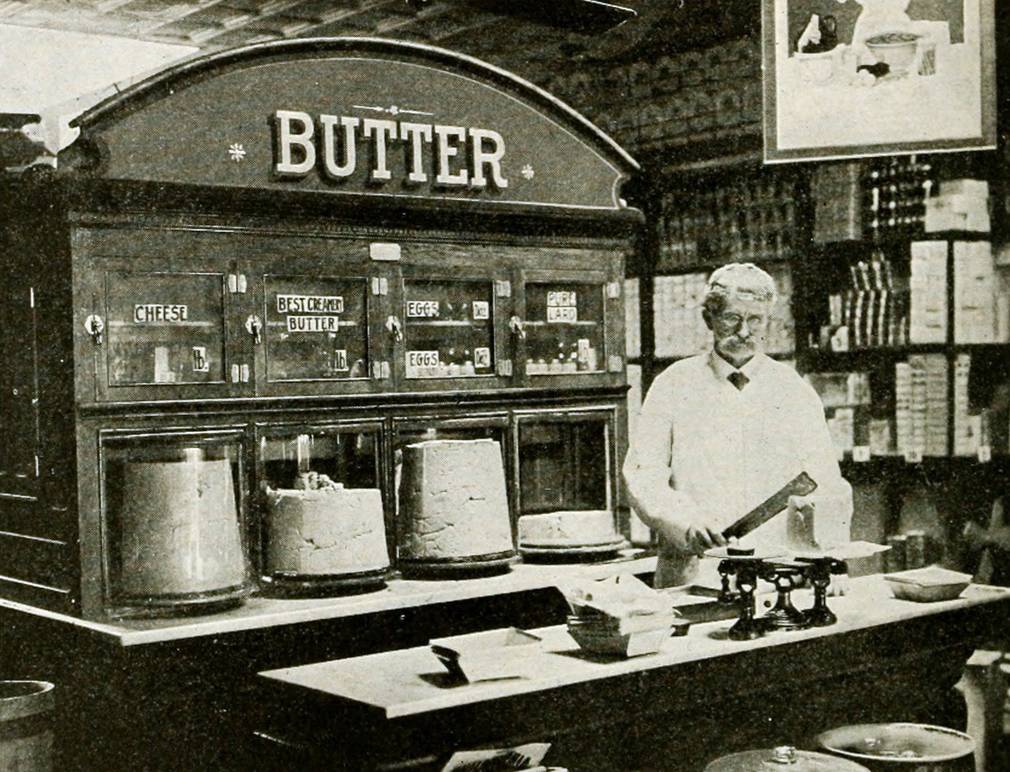Butter: A Food To Be Eaten Wisely
A variety of legends prove that butter has ancient origins yet no identifiable place of origin. The best-known legend tells of a North African camel driver who, after a long and bumpy trip, discovers that the milk that he’d placed in his animal-hide bag had turned into a solid mass. Disinclined to toss it, he decides to taste the milk and realizes not only is it good, but it also satisfies his hunger. .
A Very Ancient Product
Ancient testaments of the product’s existence don’t end there. A bas-relief in the Archaeological Museum in Baghdad shows that as early as 3000 BC, the Sumerians were making butter with an upright churn. Some documents in the Archaeological Museum in Turin attest to the fact that the Egyptians were familiar with it, though they only ate butter made from sheep and goat’s milk.
In Italy it began to be widely used in the early 1400s, so widely that a Neapolitan manuscript at the end of the century records that it was more widely consumed than lard. Butter was late to catch on in France and other European countries, but quickly became a popular and fundamental ingredient in fish and meat sauces. During the Middle Ages, religious authorities declared it a “fatty food” and prohibited its use during “lean” days. The first to resist this edict was Charles V of France (1339-1380). Anne of Brittany had to beg the Pope on behalf of her people for absolution for the sin of gluttony. In 1495, other European countries were granted the same absolution—after paying a significant sum of money.
Butter increasingly appears in the recipes of the XVII and XVIII centuries, and in increasingly original ways. In the 1600s, for example, many countries bled cows and mixed the blood with the same animal’s milk and butter. The dish was considered a delicacy.
Nevertheless, the food continued to be produced by families up until the turn of the 19th century, with the discovery of applying centrifugal force for skimming milk. That invention, combined with the invention of refrigerators, led to the industrial production of butter.
How To Make Butter
Butter is made from milk through the manufacturing of heavy cream. 5 cups of butter requires roughly 100 cups of milk.
There are two methods to make butter: skimming or centrifuging. In the first method, the milk sits for 8-12 hours, during which time the fat of the milk separates from the liquid and rises to the top. Using a centrifuge, on the other hand, is a mechanical operation. The fat globules are separated from the liquid by centrifuging the milk. The resulting creams are pasteurized at a temperature of ~190 degrees Fahrenheit and cooled for 2-4 hours at a temperature of ~50 Fahrenheit. At this point the cream is “mature” and ready to be made into butter by “cold” churning the cream with a machine; in this phase, the fat globules fuse, eliminating any residual water. The butter is carefully washed with cold water and again fused to eliminate any residual liquid and microorganisms in order for it to be conserved longer.
The two methods for making butter, along with the organoleptic qualities of the milk used, can give the butter different colors and aromas.
Butter Does a Body Good
Short-chain fatty particles in butter are easily digested, quickly absorbed and therefore particularly useful for people who lead active lives or play sports. In short, for those who need a little backup energy.
The fats are precious nutrients, but they need to be consumed in moderation. A good nutritional regimen leaves room for all foodstuffs, but it’s important to bear in mind your daily calorie intake. Unfortunately, these days there has been a drastic reduction in energy consumption; cars, televisions and computers have turned us into sedimentary animals and negatively impacted our quality of life. So we have less need for fats.
On the other hand, fats are indispensable for a well-balanced diet. The cells in our bodies are protected by membranes that are mostly made up of fats, and our minds and nervous system have particular need of them. Butter is also one of the few sources of vitamin D, which is important for digesting calcium, i.e., for our bones to grow and be healthy. It also contains a significant quantity of liposoluble vitamins like vitamin A, which helps growth, protects the mucus membrane and prevents infection.
If properly used, butter can be an important part of a healthy and balanced diet. It is particularly good for children, kids, and athletes. To take the best advantage of its properties, it should be eaten raw or melted over warm food.
Fats Make the Difference How Many Butters Are There?
There are several different types of butter sold on the market. They are primarily distinguished for the quantity of fats they contain.
- “Classic” butter contains an average of 82-85% of fats.
- The fat percentage drops to 60-62% in “reduced fat” butter and as low as 39-41% in “low fat” butter.
- There is also “reduced cholesterol” butter. This product contains an average of 75-80% less cholesterol.
* Dino Borri is VP of Purchasing for Eataly USA.





































i-Italy
Facebook
Google+
This work may not be reproduced, in whole or in part, without prior written permission.
Questo lavoro non può essere riprodotto, in tutto o in parte, senza permesso scritto.